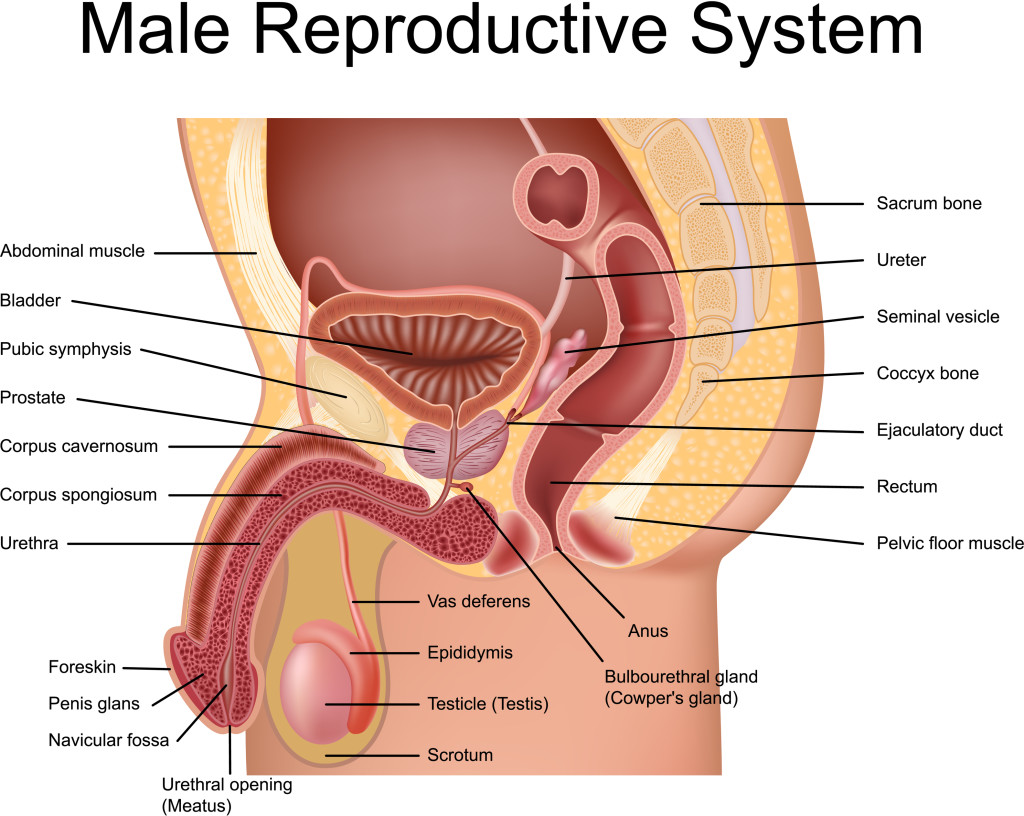What Is the Prostate Gland?
It’s key to human reproduction but also, due to its location, prone to causing a host of problems, including signs of prostate cancer.
The prostate gland is a male organ weighing about one ounce and often compared to the size of a walnut or chestnut. It is located in the pelvic region just below the bladder, in front of the rectum, and above the pelvic floor muscles. The primary function of the prostate gland is to secrete fluid that is a component of semen, a mixture of fluid and sperm cells released during ejaculation.
What Is the Function of the Prostate Gland?
It is thought that the fluid from the prostate is critical for the proper functioning of sperm, particularly through a substance called spermine that facilitates sperm motility. As a result, prostate fluid is an important factor in male fertility. Prostate fluid mixes with fluid released from the seminal vesicles (glands behind the bladder), sperm from the testes, and fluid from the bulbourethral gland (located beneath the prostate) in the urethra (the tube that carries urine and semen) to produce semen.
What Is the Anatomy of the Prostate Gland?
The most basic anatomy of the prostate includes the base, which counterintuitively is the top of the gland, and the apex, which is the bottom of the gland. In the past, the prostate gland was always described in terms of lobes: the anterior, median, lateral, and posterior lobes. The anterior lobe described the portion in front of the urethra. The median lobe described the portion between the urethra and the posterior lobe. The lateral lobes described the front and side portions of the prostate. And the posterior lobe described the portion at the back of the prostate and in front of the rectum.
Some healthcare providers may still refer to the prostate in terms of lobes, but more recently, experts have begun to refer to the prostate in terms of zones:
- Peripheral Zone: The peripheral zone accounts for approximately 75 percent of the prostate and is, as the name describes, primarily the outer layer of the prostate. It is the portion of the prostate that is directly in front of the rectum and is where the majority of prostate cancers are located. Doctors can often feel this portion or zone of the prostate through a digital rectal exam (DRE).
- Transitional Zone: The transitional zone is the smallest portion of the prostate and directly surrounds the upper portion of the urethra.
- Central Zone: The central zone surrounds the transitional zone and is where the ejaculatory duct is located. The ejaculatory duct is formed by the union of the vas deferens, the tube that carries sperm from the testes, and the seminal duct, the duct that carries seminal fluid from the seminal vesicles.
- Stroma: Sometime called the 4th zone of the prostate, the stroma is an amalgam of smooth muscle, fibrous tissue, and connective tissue. Even though experts often refer to the “capsule” of the prostate, particularly when referring to whether or not prostate cancer has spread outside of the gland, there is not a uniform tissue shell to the prostate gland, particularly at the apex.

The prostate gland is at the crossroads between waste removal via the bladder and male reproduction. Its proximity to the rectum facilitates the digital rectal exam, still the mainstay in prostate cancer detection.
Outside of the prostate there are many other types of tissue, some of which have particular significance in prostate disease and in erectile function. When surrounding lymph nodes, including periprostatic, pelvic, iliac, and sacral nodes, become infiltrated with prostate cancer, they change the stage of the cancer, impacting prognosis and treatment. Neurovascular bundles that pass to the back and side of the prostate gland play a critical role in normal erectile function and can be damaged by numerous conditions, including prostate cancer, treatment for prostate cancer, disease, and injury.


 Can Prostate Supplements Reduce Your Risk of Prostate Cancer?
Can Prostate Supplements Reduce Your Risk of Prostate Cancer?  What Is Robotic Prostatectomy & The Advantages of Robotic Surgery
What Is Robotic Prostatectomy & The Advantages of Robotic Surgery  What Can Skew a PSA Test? These 10 Factors Can Affect Your Numbers
What Can Skew a PSA Test? These 10 Factors Can Affect Your Numbers 
The prostate gland is a small, walnut-sized organ at the base of the bladder that encases the ureter. It can also cause significant problems for many men, including benign prostatic hyperplasia (BPH), prostatitis, and prostate cancer.